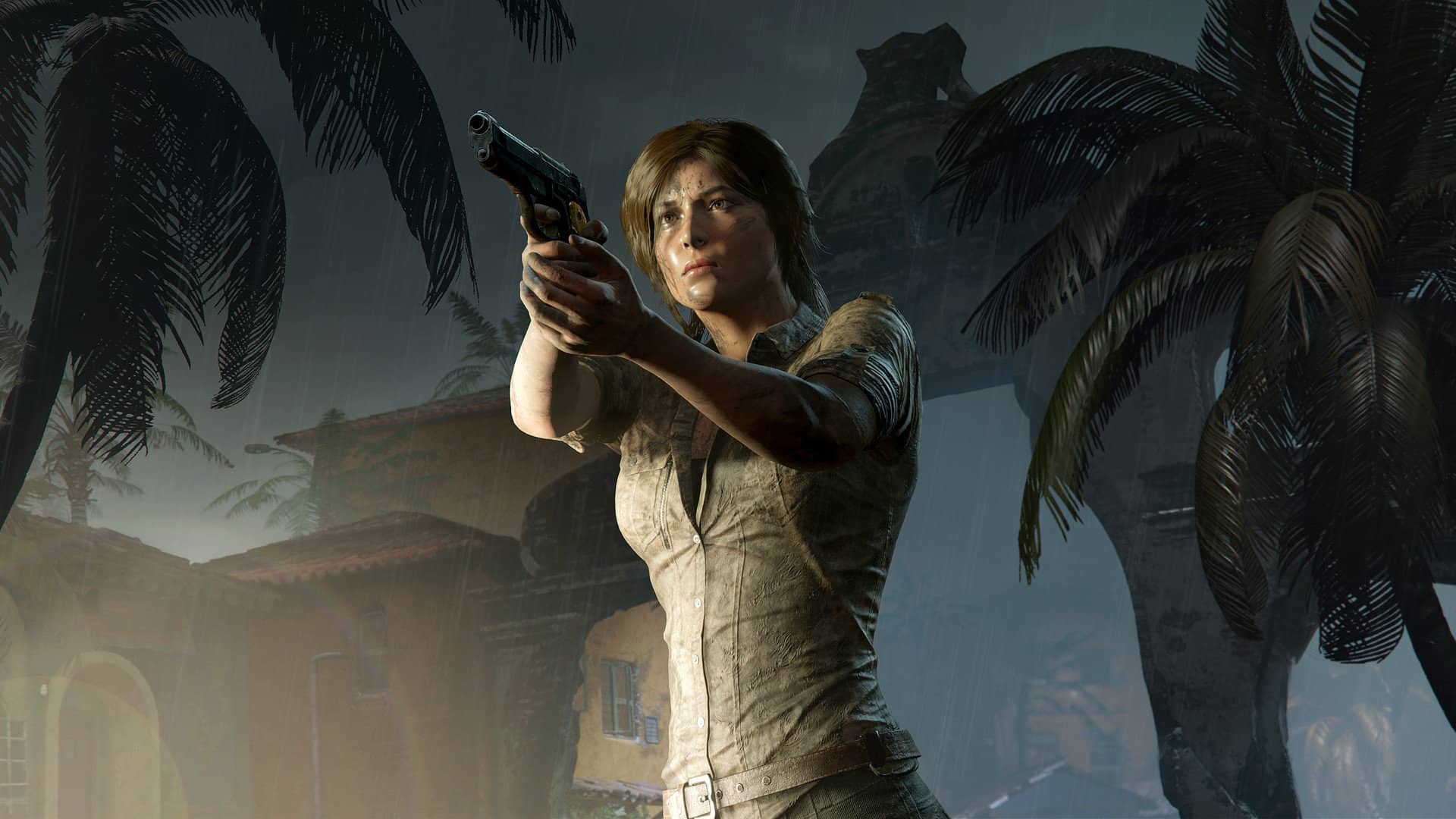Video Gamer is reader-supported. When you buy through links on our site, we may earn an affiliate commission. Prices subject to change. Learn more
Lara Croft is doing well. After being marooned on an island off the coast of Japan, girdled by the unkind waters of Dragon’s Triangle, she then proceeded to rise, in both altitude and bearing, to the snowy heart of Russia. From there, she hared toward hotter climes, first to Mexico and then into the Peruvian jungle. At the close of that adventure, back at Croft Manor, she was assigned a butler, who bore a gleaming tea tray; and a desk, behind which she appeared to be plotting her next adventure. There was a feeling—and a hope—at the end of that game, that Lara had cast off the shadows of her exploits, and would perhaps, with a few restorative sips of tea, settle into a more relaxed brand of tomb raiding: preferably, the dry and clipped kind favoured by Keeley Hawes, who, in previous games, infused the role with a loose blend of amusement and reserve.
The comparison with James Bond still holds firm. Both characters started with bright adventures and a sense of brisk irony. Both have been rebooted, with a real emphasis on the boot—slogging through bruising missions and coming away caked in mud and blood. And both are poised at an odd junction, between lightening up and doubling down. Last week, Crystal Dynamics confirmed that Lara’s next expedition is not only officially happening but happening courtesy of Unreal Engine 5. We don’t have a release date, and we don’t have many details. Dallas Dickinson, the series’ general manager, said, “Our goal is to push the envelope of fidelity and to deliver the high-quality, cinematic, action-adventure experience that fans deserve from both Crystal Dynamics and the Tomb Raider franchise.” Hmmm.

So, what should we expect? I was delighted to note that Jeff Ross, erstwhile director of Days Gone, happened to join Crystal Dynamics on the same day that the Tomb Raider announcement was made. Thus, my mind revved with thoughts of Lara bestride a ravening motorcycle, clad in biker’s leathers and barrelling toward a throng of zombies. Alas, it is likely not to be. Last year, the franchise director, Will Kerslake, spoke about “Telling stories that build upon the breadth of both Core Design and Crystal Dynamics games, working to unify these timelines.” I suppose there is nothing worse, nowadays, than an ununified timeline—nothing more liable to make an audience itch than an unconfirmed canon. Personally, I couldn’t care less, and I happen to think that the last thing Tomb Raider needs is temporal wrangling—though, I would welcome the sight of our dour and disconsolate modern Lara faced with a velociraptor, as her fossilised predecessors were.
Whether or not the envelope of fidelity is pushed, as Dickinson has it, the problem is that high-quality, cinematic, action-adventure experiences isn’t what the best Tomb Raider games have been. The very best ones (Tomb Raider II, The Last Revelation, Underworld) are (a) wordless exercises of patience, (b) chiefly concerned with the mastery of movement through physical space, and (c) occasionally—and beneficially—interrupted by the approach of a pissed-off bear. While that may sound like a workable synopsis of The Revenant, there is, in fact, nothing especially cinematic nor action-packed about them. And the biggest problem with the newer entries is very simple indeed: It’s been a long time since we last raided a really good tomb.

In Tomb Raider (2013), we got fobbed off with a few ramshackle attempts—dripping caves, mostly, cluttered with metal pulleys and yielding token trinkets. It was as if the developers were daunted by the prospect of measuring up to previous heights; no wonder the first such chamber was entitled “Tomb of the Unworthy.” There was nothing to match the opening of Underworld, in which Lara dove from the wooden decks of her yacht to the floor of the Mediterranean Sea, in whose rock lay the caverns of a Celtic temple. And sorely absent were those vast environmental mechanisms that would see Lara leap into the palm of a deity. The recent games do resound with the shunt and scrape of machinery, but it is that of the Triple-A blockbuster—lavish in texture, scarce of quiet, and terrified that we may be put off by having to think too much.
Where, then, can we go from here? “We envision a future of Tomb Raider unfolding after these established adventures,” Kerslake said, on the occasion of the series’ twenty-fifth anniversary, last year. I believe I have the solution. We’ve had Lara the death-dealing rookie, Lara the doyenne of archaeological intrigue—bring on Lara the superannuated veteran! What better way for Crystal Dynamics to unify the timeline than by accelerating it, and giving us a Lara in the crisp autumn of her career, with grey locks and a liquorice wit. Best of all, the game would shift its focus from the frothing shores of action back to puzzles. This is, I realise, pretty unlikely; games, on the whole, seem to shy from protagonists who are eligible to start drawing a state pension. (It was only at the very close of Uncharted 4: A Thief’s End, for example, that we were treated to the sight of a silvering Nathan Drake, as though someone had brushed his temples lightly with Tipp-Ex.) More probable is that we get more of what we have had, albeit filliped by Unreal Engine 5. This is no bad thing; I have spent hours marvelling at that engine in action. But no matter how crystalline the dynamics on display, there are always those of us who wish that these games would get back to their core design.

